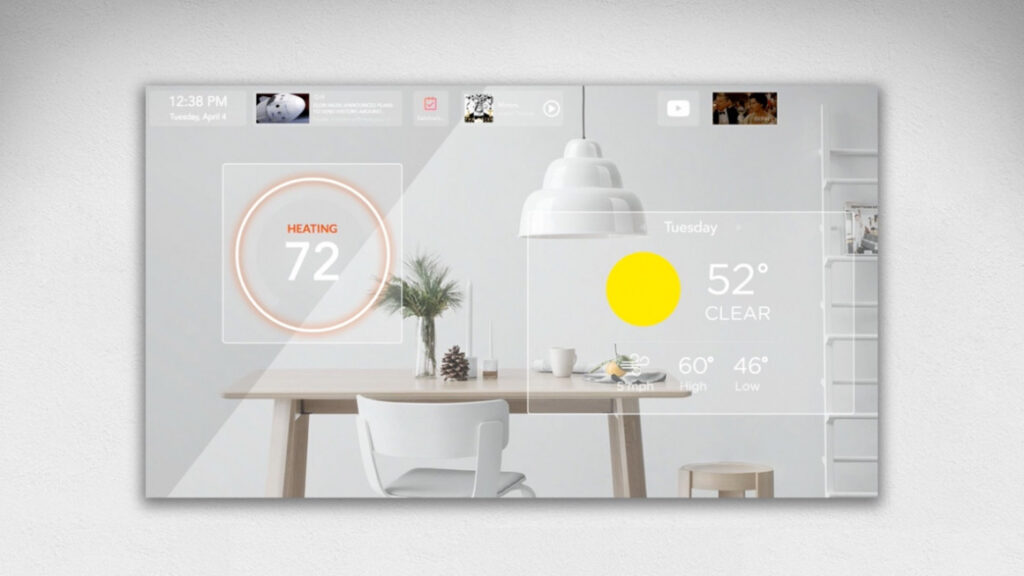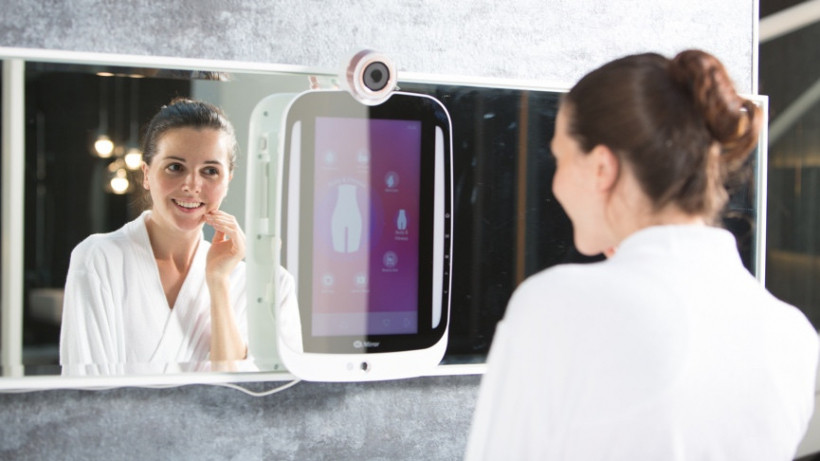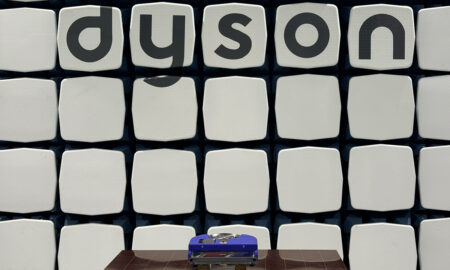Lights, stats and controls are vying for our attention
When you stand in front of a mirror in your home in 2018, you’re asking yourself the following questions: What do I look like right now? Will these items on the shelf help? Is it acceptable to leave the house yet?
This can spiral. Is that a grey hair? Has my nose got bigger? Do I look like a good person? *Am* I a good person? It’s a wonder we tear ourselves away from the mirror at all, though the careful construction of selfies is the on-the-go homage to our one true love – our own reflection.
Read this: The smart furniture edit for early 2018
Which is why it’s even more intriguing that we seem reasonably ready and willing to share the real estate of the mirror with the internet. The definition of a smart mirror is still pretty loose. Some proclaim themselves smart with variable LED lighting so that women can apply make-up correctly, others say smart when there’s a voice assistant, or – most sci-fi of all – smartphone-style graphics and icons on a mirrored display where reflection comes second.
The most recent smart mirror, the Kohler Verdera Voice Lighted Mirror, launched at CES, adding a built-in speaker for music, Echo-style Alexa voice controls and 1000 lux LED lights.

The Kohler mirror (pictured above) fits neatly – and pretty practically – in the middle of two different approaches from 2017: those of the HiMirror Plus mirror and Duo AI’s upcoming smart mirror. The HiMirror (main image) is a personal mirror, has the adjustable LED lights for different scenes and claims to analyse your skin’s condition. The similar iHome vanity mirror features a built-in Bluetooth speaker for grooming tunes and button-based access to both Alexa and Google Assistant. Note: if you’re going to add voice controls to a mirror, make it hands free like Kohler.
Duo AI (pictured below) is going for the Tony Stark approach, a big 27-inch touch sensitive display for news, weather, music controls, even playing videos, which also functions as a mirror. This is designed more for communal use than the individual gaze, and I expect we’ll see more where this came from. So which follows the righteous path of the mirror?
If you look back to the myth of Narcissus you’ll find that when he fell in love with his own reflection – in a pool, not a digitally enhanced looking glass – and later lost the will to live because he could not be loved by this beautiful creature i.e. himself, it wasn’t the reflection but the fixation with the reflection that caused his downfall. (Incidentally, Narcissus rejected Echo, then a nymph not a smart speaker).
To be a narcissist is to have an excessive interest in ourselves but ‘ourselves’ now includes the chunk of our persona that lives online. The HiMirror Plus, iHome and even the health stat displaying Mango Mirror could encourage the fixation with our own physical appearance. The Duo AI, and similar devices that deliver social media alerts, could amplify our obsession with our public perception.

The first vanity ‘mirrors’ were pools of water – if they were dark and still with a nice smooth surface, all the better. Then we started manufacturing expensive, personal grooming mirrors from bronze, obsidian and polished stone, such was our appetite for consuming our own faces. Later, people began coating glass in reflective metals and the obsession was really away.
Glass and metal, that sounds familiar. “Any TV, any smartphone, any iPad, when you turn it off it looks like a black mirror and there’s something cold and horrifying about that.” That’s how Charlie Brooker has described his dystopian TV show’s title. In the episode “Nosedive” from 2017, a girl stares at her image in the mirror while practicing a playful yet non-threatening giggle and checking her social credit score.
Still, it’s not a sin to want to know what’s going on in the mornings. The idea of a connected hub that’s eye level – so we’re not hunched over it – and easily accessible as we brush our teeth, comb our hair or put our contacts in remains pretty appealing. Ideally it would have face or voice recognition to bring up personal profiles for the whole household as well as hands free control. And the etiquette would easily fall into place whether it’s placed in the bathroom or the hall: No hogging the smart mirror, it’s rude.
Nothing pulls us away from our phones, they’re too addictive. This year’s projector hubs and smart displays and home robots are curious alright but they will also require learning new daily routines and habits.
We can’t be trusted to be left alone with our face, or the internet – so maybe the only responsible thing left to do is to combine the two.





